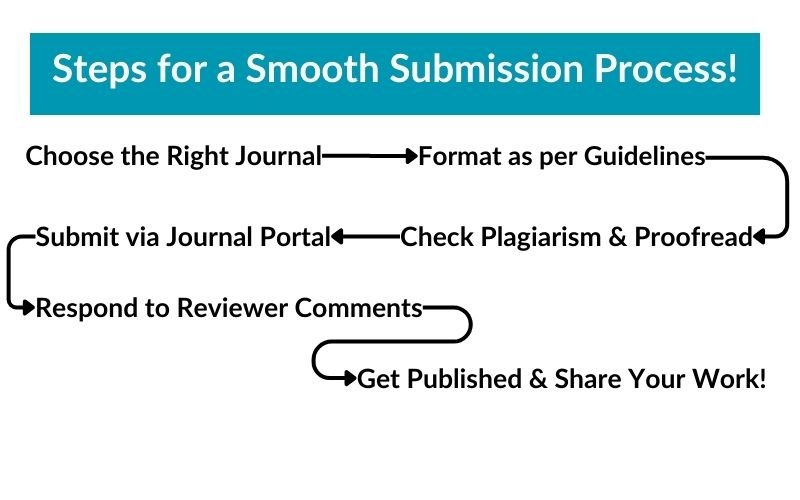Here’s a step-by-step guide on the Research Paper Submission Process:
Step 1: Choose a Suitable Journal
- Identify journals relevant to your research area.
- Check indexing (Scopus, Web of Science, UGC CARE, etc.).
- Review the journal’s scope, aims, and impact factor.
Step 2: Prepare Your Manuscript
- Format according to the journal’s guidelines.
- Structure typically includes:
- Title
- Abstract
- Keywords
- Introduction
- Methodology
- Results & Discussion
- Conclusion
- References
- Ensure proper citation style (APA, IEEE, etc.).
Step 3: Check for Plagiarism
- Use plagiarism detection tools (Turnitin, iThenticate, etc.).
- Maintain originality (below the accepted threshold, usually <10-15%).
Step 4: Write a Cover Letter
- Address the Editor-in-Chief.
- Mention the significance of your research.
- Confirm that it is not under consideration elsewhere.
Step 5: Submit the Manuscript Online
- Most journals use platforms like:
- Elsevier (Editorial Manager)
- Springer (Manuscript Central)
- IEEE (ScholarOne Manuscripts)
- Upload all required files (manuscript, figures, tables, supplementary data).
Step 6: Initial Editorial Check
- The editor reviews:
- Scope match
- Plagiarism
- Formatting
- If issues are found, it may be desk rejected.
Step 7: Peer Review Process
- Sent to 2-3 reviewers for evaluation.
- Reviewers provide comments, suggestions, and a decision:
- Accept without revisions (rare)
- Minor revisions
- Major revisions
- Reject
Step 8: Revise and Resubmit
- Address reviewer comments carefully.
- Highlight changes in the revised manuscript.
- Write a response letter to reviewers.
Step 9: Final Decision
- The editor evaluates the revised paper.
- Decision outcomes:
- Accepted
- Further revision required
- Rejected
Step 10: Proofreading and Publication
- Once accepted, you’ll receive galley proofs for final corrections.
- After approval, the paper is published online and later in print.

Leave a Reply